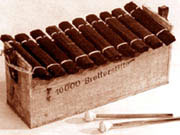 Melody
Melody Melody
MelodyMelodic Notation
|
Staff 5 Lines and 4 Spaces Musical notes on the staff sit either on a line or in a space. The placement on the staff indicates pitch. Reading music involves understanding rhythmic notation as well as melodic notation.
|
The staff is a musical timeline reading from left to right. |
|
The Treble Clef
The treble clef tells us which line is going to be which note or pitch. The treble clef is also known as G Clef. The bottom of the sign encircles the 2nd line from the bottom of the staff - G |
Treble Clef - or G Clef |
| The
C Scale
The notes of the C Scale begin below the staff. Middle C resides on an extra line called a ledger line. The notes reside on the staff either on a line or on a space. Notes on a line have encircle the line. Notes on the space encompass the whole space. |
The C Scale - Stepping from middle C on the piano up 8 notes to the next C on the keyboard or staff. |
| The
White Keys
The notes of the C Major Scale use only the white keys. If you start on any other note and want to build a major scale, you would have to use some of the black keys as well. If you were to go from one key to the next including all the black keys, you would be playing a chromatic scale rather than a major scale. |
|
|
The Musical Alphabet is: a b c d e f g Middle C has its own ledger line. The notes move up and down the staff from one line to the next space and so on. Remember: This staff only represents the treble clef. The treble clef is also known as the "G" clef because the bottom of the sign circles around the second line - G. The Grand Staff includes the bass clef below the treble clef. The note in between the bass and treble clefs is middle C. The bass clef is also known as the "F" clef because the line in between the two dots (on the fourth line) is an F The lines of the staff are: E G B D F Some people like to use this sentence to help them remember the names of the notes on the lines of the staff. Every Good Boy Does Fine The bottom line is known as the first line - E. The second line is G, the third line is B, the fourth line is D, and the fifth line is F. The spaces of the staff are: F A C E Some people like to remember that the spaces spell FACE The bottom space is known as the first space - F. The second space is A, the third space is C, and the fourth space is E. |
|
|
Auditory - Visual - Kinesthetic Bell Activities When teaching children the beginnings of reading melodies.... I like to use inexpensive colored bells when I teach melody. The children can "read" the music of basic songs easily when the color cues are provided. I begin with laminated bell songs that include colored rectangles with just the rhythm note values. I then move to colored melodic notation on the staff. I also like to use bell step ladders so they can visualize the concept of moving from low C up step by step to high C. See song guides and additional resources in course documents.
C Scale Colored Bells http://www.musiciselementary.com/ct_CG13931474.htm The C Scale Step Ladder The C Scale Piano Keyboard The C Scale Notated on the Staff
Bells are available in a variety of configurations. Bell ladders can demonstrate the steps from low to high pitch. The size of the metal bars provides a great visual for demonstrating that larger bells have lower pitch than smaller bars. Some bell sets allow you you separate single bells so you can use only those needed for a particular song or ostinato. For higher quality instruments and a more sophisticated use of bells, xylophones, metallophones, glockenspiel, etc. read about Orff music instruction in the music methods document in unit three.
Orff-Schulwerk Websites
|
|
Singing and Solfege
Your students can learn about melodies and how to read music by using the one instrument we all have free access to - the voice! Kodaly, Mary Helen Richards, Education through Music, and other music methodologies utilize hand signals along with learning to sing and read music. Typically, music in Kodaly starts with the pentatonic (5-note) scale - do, re, mi, sol, la. If you play just the black keys on your piano, you'll hear a pentatonic scale. Below is an example of the hand signals used in a major scale. "Do" is movable meaning that the key or home base of a scale is always do - but do can be any note.
C Scale in Solfege
Kodaly Websites
Websites for Melody and Music Theory
See more in course documents - Playing the Recorder
Powerpoint presentations are included on the Circle of Fifths and Major Scales, Intervals, and Minor Scales.
Learn to play the piano
Music Theory Online - http://www.dolmetsch.com/theoryintro.htm

Copyright 2003 by Carla Piper, Ed. D.